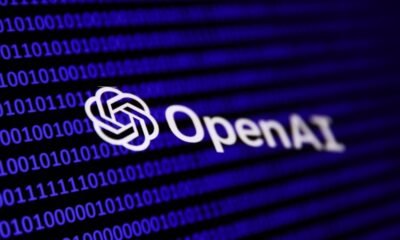AI Research
You run the risk of killing …: Meta chief AI scientist Yann LeCun to Elon Musk on his engineers vs researchers comment

The debate over the future of artificial intelligence (AI) development has taken a new turn, with Meta’s chief AI scientist, Yann LeCun, has openly disagreed with Elon Musk‘s latest move at his startup, xAI. LeCun slammed Musk’s take on eliminating the “researcher” job title in favour of “engineer.” The Meta executive said that both have different roles and the Tesla CEO may be risking “killing breakthrough innovation.”In a long post on LinkedIn, LeCun shared a screenshot of Musk’s post and explained the difference between all the roles. He argued that blurring the lines between the two roles could stifle innovation. “There is a difference between research and engineering in (1) modus operandi, (2) methodology, (3) openness, (4) evaluation criteria,” he wrote.“If you make no distinction between the two activities, if you don’t evaluate researchers and engineers with different criteria, you run the risk of killing breakthrough innovation,” LeCun stated. He further emphasised that true breakthroughs require “teams with a long horizon and minimal constraints from product development and management.”LeCun pointed to the history of scientific and technological progress, arguing that the most impactful innovations came from dedicated research labs that were distinct from engineering divisions. “The industry research labs of yore that have left an indelible mark on scientific and technological progress (Bell Labs Area 11, IBM Research, Xerox PARC, etc) were all research divisions that were clearly separate from engineering divisions,” he said.
What Elon Musk said about Researchers and Engineers
LeCun’s response came two days after Musk shared a post on X (formerly Twitter) that xAI would be eliminating the “researcher” job title in favour of “engineer.” “This false nomenclature of ‘researcher’ and ‘engineer’, which is a thinly-masked way of describing a two-tier engineering system, is being deleted from @xAI today. Researcher is a relic term from academia,” Musk wrote. Musk is not the first to challenge this distinction. Other major AI companies have also moved away from the traditional “researcher” title. In a 2023 post on X, OpenAI president Greg Brockman said the company preferred to avoid such rigid buckets and instead uses the title “Member of Technical Staff.” Anthropic, the creator of the Claude AI model, also uses the same title, with its careers page stating, “While there’s historically been a division between engineering and research in machine learning, we think that boundary has dissolved with the advent of large models.”
AI Research
As they face conflicting messages about AI, some advice for educators on how to use it responsibly

When it comes to the rapid integration of artificial intelligence into K-12 classrooms, educators are being pulled in two very different directions.
One prevailing media narrative stokes such profound fears about the emerging strengths of artificial intelligence that it could lead one to believe it will soon be “game over” for everything we know about good teaching. At the same time, a sweeping executive order from the White House and tech-forward education policymakers paint AI as “game on” for designing the educational system of the future.
I work closely with educators across the country, and as I’ve discussed AI with many of them this spring and summer, I’ve sensed a classic “approach-avoidance” dilemma — an emotional stalemate in which they’re encouraged to run toward AI’s exciting new capabilities while also made very aware of its risks.
Even as educators are optimistic about AI’s potential, they are cautious and sometimes resistant to it. These conflicting urges to approach and avoid can be paralyzing.
Related: A lot goes on in classrooms from kindergarten to high school. Keep up with our free weekly newsletter on K-12 education.
What should responsible educators do? As a learning scientist who has been involved in AI since the 1980s and who conducts nationally funded research on issues related to reading, math and science, I have some ideas.
First, it is essential to keep teaching students core subject matter — and to do that well. Research tells us that students cannot learn critical thinking or deep reasoning in the abstract. They have to reason and critique on the basis of deep understanding of meaningful, important content. Don’t be fooled, for example, by the notion that because AI can do math, we shouldn’t teach math anymore.
We teach students mathematics, reading, science, literature and all the core subjects not only so that they will be well equipped to get a job, but because these are among the greatest, most general and most enduring human accomplishments.
You should use AI when it deepens learning of the instructional core, but you should also ignore AI when it’s a distraction from that core.
Second, don’t limit your view of AI to a focus on either teacher productivity or student answer-getting.
Instead, focus on your school’s “portrait of a graduate” — highlighting skills like collaboration, communication and self-awareness as key attributes that we want to cultivate in students.
Much of what we know in the learning sciences can be brought to life when educators focus on those attributes, and AI holds tremendous potential to enrich those essential skills. Imagine using AI not to deliver ready-made answers, but to help students ask better, more meaningful questions — ones that are both intellectually rigorous and personally relevant.
AI can also support student teams by deepening their collaborative efforts — encouraging the active, social dimensions of learning. And rather than replacing human insight, AI can offer targeted feedback that fuels deeper problem-solving and reflection.
When used thoughtfully, AI becomes a catalyst — not a crutch — for developing the kinds of skills that matter most in today’s world.
In short, keep your focus on great teaching and learning. Ask yourself: How can AI help my students think more deeply, work together more effectively and stay more engaged in their learning?
Related: PROOF POINTS: Teens are looking to AI for information and answers, two surveys show
Third, seek out AI tools and applications that are not just incremental improvements, but let you create teaching and learning opportunities that were impossible to deliver before. And at the same time, look for education technologies that are committed to managing risks around student privacy, inappropriate or wrong content and data security.
Such opportunities for a “responsible breakthrough” will be a bit harder to find in the chaotic marketplace of AI in education, but they are there and worth pursuing. Here’s a hint: They don’t look like popular chatbots, and they may arise not from the largest commercial vendors but from research projects and small startups.
For instance, some educators are exploring screen-free AI tools designed to support early readers in real-time as they work through physical books of their choice. One such tool uses a hand-held pointer with a camera, a tiny computer and an audio speaker — not to provide answers, but to guide students as they sound out words, build comprehension and engage more deeply with the text.
I am reminded: Strong content remains central to learning, and AI, when thoughtfully applied, can enhance — not replace — the interactions between young readers and meaningful texts without introducing new safety concerns.
Thus, thoughtful educators should continue to prioritize core proficiencies like reading, math, science and writing — and using AI only when it helps to develop the skills and abilities prioritized in their desired portrait of a graduate. By adopting ed-tech tools that are focused on novel learning experiences and committed to student safety, educators will lead us to a responsible future for AI in education.
Jeremy Roschelle is the executive director of Digital Promise, a global nonprofit working to expand opportunity for every learner.
Contact the opinion editor at opinion@hechingerreport.org.
This story about AI in the classroom was produced by The Hechinger Report, a nonprofit, independent news organization focused on inequality and innovation in education. Sign up for Hechinger’s weekly newsletter.
AI Research
Now Artificial Intelligence (AI) for smarter prison surveillance in West Bengal – The CSR Journal
AI Research
OpenAI business to burn $115 billion through 2029 The Information

OpenAI CEO Sam Altman walks on the day of a meeting of the White House Task Force on Artificial Intelligence (AI) Education in the East Room at the White House in Washington, D.C., U.S., September 4, 2025.
Brian Snyder | Reuters
OpenAI has sharply raised its projected cash burn through 2029 to $115 billion as it ramps up spending to power the artificial intelligence behind its popular ChatGPT chatbot, The Information reported on Friday.
The new forecast is $80 billion higher than the company previously expected, the news outlet said, without citing a source for the report.
OpenAI, which has become one of the world’s biggest renters of cloud servers, projects it will burn more than $8 billion this year, some $1.5 billion higher than its projection from earlier this year, the report said.
The company did not immediately respond to Reuters request for comment.
To control its soaring costs, OpenAI will seek to develop its own data center server chips and facilities to power its technology, The Information said.
OpenAI is set to produce its first artificial intelligence chip next year in partnership with U.S. semiconductor giant Broadcom, the Financial Times reported on Thursday, saying OpenAI plans to use the chip internally rather than make it available to customers.
The company deepened its tie-up with Oracle in July with a planned 4.5-gigawatts of data center capacity, building on its Stargate initiative, a project of up to $500 billion and 10 gigawatts that includes Japanese technology investor SoftBank. OpenAI has also added Alphabet’s Google Cloud among its suppliers for computing capacity.
The company’s cash burn will more than double to over $17 billion next year, $10 billion higher than OpenAI’s earlier projection, with a burn of $35 billion in 2027 and $45 billion in 2028, The Information said.
-

 Business1 week ago
Business1 week agoThe Guardian view on Trump and the Fed: independence is no substitute for accountability | Editorial
-
Tools & Platforms4 weeks ago
Building Trust in Military AI Starts with Opening the Black Box – War on the Rocks
-

 Ethics & Policy1 month ago
Ethics & Policy1 month agoSDAIA Supports Saudi Arabia’s Leadership in Shaping Global AI Ethics, Policy, and Research – وكالة الأنباء السعودية
-

 Events & Conferences4 months ago
Events & Conferences4 months agoJourney to 1000 models: Scaling Instagram’s recommendation system
-

 Jobs & Careers2 months ago
Jobs & Careers2 months agoMumbai-based Perplexity Alternative Has 60k+ Users Without Funding
-

 Education2 months ago
Education2 months agoVEX Robotics launches AI-powered classroom robotics system
-

 Podcasts & Talks2 months ago
Podcasts & Talks2 months agoHappy 4th of July! 🎆 Made with Veo 3 in Gemini
-

 Education2 months ago
Education2 months agoMacron says UK and France have duty to tackle illegal migration ‘with humanity, solidarity and firmness’ – UK politics live | Politics
-

 Funding & Business2 months ago
Funding & Business2 months agoKayak and Expedia race to build AI travel agents that turn social posts into itineraries
-

 Podcasts & Talks2 months ago
Podcasts & Talks2 months agoOpenAI 🤝 @teamganassi



















